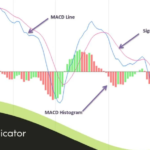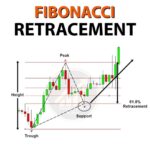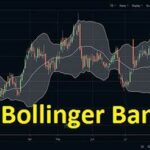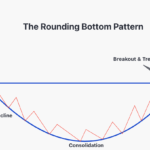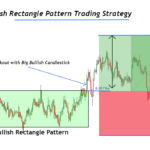
The DAX 30 Index (now referred to as the DAX 40 as of September 2021) is the leading stock market index in Germany, representing 30 (now 40) of the largest and most liquid companies listed on the Frankfurt Stock Exchange. The DAX 30 is a blue-chip index, meaning it tracks major, well-established companies, often multinational corporations with significant global presence. The index is widely viewed as a key indicator of the health of the German economy, as well as the broader European market.
Composition and Structure of the DAX 30
The DAX 30 was historically made up of the top 30 companies by market capitalization and liquidity in Germany, and after the expansion in 2021, it now includes 40 companies. The index is market-cap-weighted, meaning that larger companies have a greater influence on its performance. The companies in the DAX represent a variety of sectors, including automotive, healthcare, industrials, technology, and consumer goods. Some of the most recognizable names in the index include:
- Volkswagen (VOW)
- BMW (BMW)
- Siemens (SIE)
- Allianz (ALV)
- SAP (SAP)
These companies are global leaders in industries such as automotive manufacturing, engineering, insurance, and software. Due to their international operations, the performance of the DAX is often influenced not only by domestic German economic conditions but also by global factors like trade relations, supply chains, and international demand for industrial goods and services.
Importance of the DAX 30
The DAX 30 is considered the most important index in Germany and one of the most influential indices in Europe. It provides insight into the performance of Germany’s largest and most globally integrated companies, many of which have operations and revenues that span continents. As Germany is the largest economy in Europe and a major exporter, the DAX 30 is often used as a proxy for the health of the German economy as well as the broader European economic landscape.
The index is closely watched by investors and analysts as a measure of the strength of European markets, particularly in industries where Germany leads, such as manufacturing, automotive, and industrial engineering. Given the multinational nature of the companies in the DAX, the index often reacts to global events such as changes in trade policies, currency fluctuations, and shifts in global demand.
Performance and Global Exposure
Companies in the DAX 30 are typically global players, meaning that their performance is often tied to international economic conditions. For example, Germany’s automotive giants like Volkswagen, Daimler, and BMW rely heavily on exports to markets like China and the United States, making the DAX 30 sensitive to changes in global trade and tariffs. Additionally, industrial companies like Siemens and BASF are leaders in sectors such as engineering, chemicals, and technology, which are highly cyclical and driven by global demand.
The DAX 30 is often affected by fluctuations in the euro, as currency movements impact the profitability of exports. A weaker euro typically benefits the index because it makes German exports cheaper for foreign buyers. Conversely, a stronger euro can hurt exporters by reducing their international competitiveness. As a result, the DAX is not only a reflection of Germany’s economy but also of broader global economic trends.
DAX 30 Expansion to DAX 40
In September 2021, the DAX 30 was expanded to include 40 companies, reflecting a modernization effort to make the index more representative of the German economy and the evolving nature of global markets. The expansion was partly in response to the increasing significance of newer industries like healthcare and technology, which are becoming more dominant. The additional 10 companies added greater sectoral diversification, improving the index’s balance across different industries.
The move to DAX 40 also came with stricter inclusion rules to ensure higher transparency and stability, particularly after high-profile corporate scandals like that of Wirecard, which was once part of the DAX 30 before collapsing due to fraud.
Investment Strategies Using the DAX 30
The DAX 30 offers several investment opportunities, particularly for those interested in gaining exposure to Germany’s largest companies and the broader European market. Investors can gain access to the DAX through several means, including:
- Exchange-Traded Funds (ETFs): The most popular way to invest in the DAX is through ETFs that track the index, such as the iShares DAX UCITS ETF. These funds allow investors to gain broad exposure to Germany’s largest companies in a cost-effective way.
- Index Funds: Similar to ETFs, index funds that track the DAX 30 offer a passive investment approach for those looking to invest in the German market without selecting individual stocks.
- Individual Stock Selection: For investors who want to handpick stocks from the DAX, some of the index’s companies, like Siemens and SAP, are global leaders in their industries and attract investors looking for exposure to high-quality blue-chip stocks.
- Dividends and Growth: Many companies in the DAX are known for their consistent dividend payments, making the index attractive to income-oriented investors. At the same time, companies in sectors like technology and industrials offer strong growth potential.
Volatility and Risk
The DAX 30 is known for its cyclical nature, meaning it can be more volatile than indices that are dominated by defensive sectors like healthcare or consumer staples. During periods of global economic growth, the DAX tends to outperform due to its concentration in industrial and export-driven companies. However, in times of economic downturns or trade disputes, the index can experience sharp declines.
Conclusion
The DAX 30 (now DAX 40) is a crucial index for understanding the performance of Germany’s largest and most influential companies. It offers investors exposure to key industries such as automotive, industrial engineering, and technology, with a global reach that extends beyond Germany. As a highly cyclical index, the DAX 30 can offer significant growth opportunities, but it also comes with greater volatility, especially during periods of global economic uncertainty. For those interested in the European markets, the DAX remains one of the most important indices to watch.


